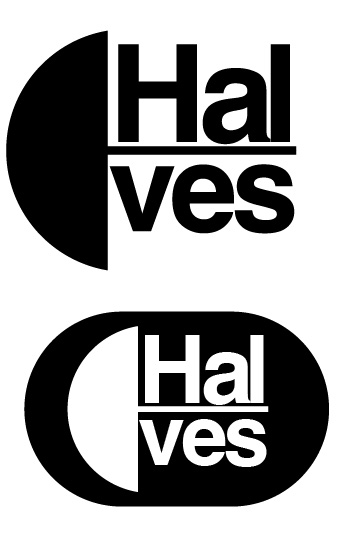BRAND MOCK-UP HALVES
As a graphic designer leveraging design thinking, creating a sleek, minimalist design for a fashion brand mock-up involves a strategic approach. Here’s a step-by-step brand mockup strategy to achieve a consistent brand identity across multiple platforms:
Conduct Market Research: Begin by conducting thorough market research to understand the current landscape of the fashion industry, particularly within the niche targeted by the brand. Analyze competitors, trends, consumer preferences, and emerging market opportunities. This research will provide valuable insights that will inform the design direction and strategic decisions throughout the branding process.
Define Brand Identity: With a clear understanding of the market landscape, define the brand’s identity based on its unique value proposition, target audience, and market positioning. Develop a brand narrative and visual language that resonates with the brand’s ethos and distinguishes it from competitors. Ensure that the brand identity reflects the minimalist aesthetic while remaining relevant and appealing to the target demographic.
Create Mood Boards: Gather inspiration from various sources to create mood boards that capture the essence of the brand’s identity and aesthetic. Curate images, colors, typography, and textures that evoke the desired emotions and convey the brand’s personality. Use these mood boards as a reference point throughout the design process to maintain consistency and coherence across all brand touchpoints.
Logo Design: Craft a logo that serves as the cornerstone of the brand identity. Ensure that the logo is memorable, versatile, and reflective of the brand’s values and personality. Experiment with different typography, symbols, and visual elements to create a distinctive mark that resonates with the target audience and reinforces the brand identity.
Website Design: Design a sleek and intuitive website that provides a seamless user experience and effectively communicates the brand’s story and offerings. Focus on minimalist layouts, high-quality imagery, and intuitive navigation to engage visitors and drive conversions. Incorporate elements of the brand’s visual identity to create a cohesive and immersive online experience.
Pop-up Capture: Implement strategic pop-up capture forms to capture visitor information and build an engaged subscriber base. Design visually appealing pop-ups that align with the brand’s aesthetic and messaging while offering compelling incentives for sign-ups. Leverage data analytics to optimize pop-up performance and maximize conversion rates.
Email Marketing: Develop targeted email marketing campaigns that deliver valuable content, promotions, and updates to subscribers. Personalize email communications based on user preferences and behaviors to enhance engagement and drive conversions. Utilize minimalist design elements and persuasive copywriting to create impactful email campaigns that resonate with recipients.
Social Media Presence: Establish a strong and consistent presence across relevant social media platforms to connect with the target audience and build brand awareness. Create compelling visual content, engage with followers, and foster authentic relationships to cultivate a loyal and engaged community. Leverage social media analytics to track performance metrics and refine strategies for optimal results.
Social Media Motion Graphics: Enhance the brand’s social media presence with dynamic motion graphics and animations that capture attention and convey key brand messages. Create visually stunning content that aligns with the brand’s aesthetic and resonates with the target audience. Experiment with different formats and styles to keep content fresh and engaging.
Iterate and Refine: Continuously monitor and evaluate the effectiveness of branding efforts across all touchpoints. Collect feedback from users and stakeholders, analyze performance metrics, and identify areas for improvement and optimization. Iterate and refine branding strategies and design elements based on insights and feedback to ensure continued growth and success.
By adopting a design thinking approach, the graphic designer can navigate the complexities of creating a sleek, minimalist design for a fashion brand mock-up while ensuring consistency and coherence across all touchpoints.







